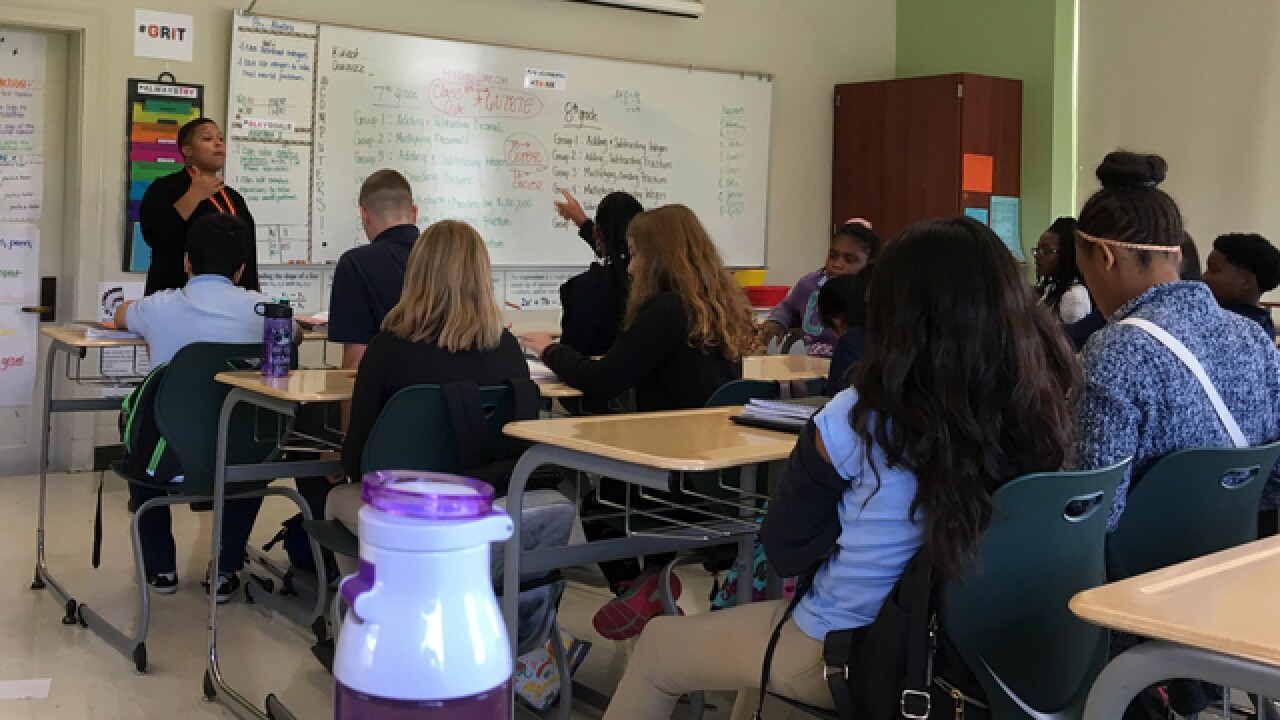CINCINNATI -- Over the course of its first school year, LEAP Academy, the Spanish magnet school in North Fairmount, grew from 46 to 245 students.
"Every time I open my office door, I see five new faces I've never met before," Principal Priya Sonty said.
Most of the students' families qualify as low-income. Some parents don't speak English well or at all. New staff members come along with the new students, and the school also provides community outreach outside of classroom time.
Guiding the new, growing bilingual school is a challenge Sonty said she was able to take on in part because of her experience with Teach For America.
"My school is a high-needs school, which is exactly where I started," Sonty said, recalling her Teach For America assignment teaching Spanish in a Memphis high school. "Without that, I never would have known, honestly, the great need for relationship building with these students and families."
Five years since opening a chapter in Southwest Ohio, Teach For America has nearly doubled the number of alumni corps members living in the region. About 80 percent of the more than 225 Teach For America alumni are, like Sonty, working full-time in education or in a field that directly affects low-income communities.

Five years since opening a chapter in Southwest Ohio, Teach For America has nearly doubled the number of alumni corps members living in the region. These are 2018 corps members who will start teaching this fall.
Nearly half of all Cincinnati children live below the poverty line. Teach For America places and supports teachers in 26 schools across the region and works to close the achievement gap between low-income students and their peers.
On average, Teach For America corps members see their students gain more than 12 months of academic growth during each school year, said Ben Lindy, executive director of TFA of Southwest Ohio and a TFA alumnus.
One corps member, Crystal Watson, teaching middle school math at Hartwell School, saw 1.9 years of academic growth in one semester. Overall, Teach For America corps members are helping students of all backgrounds have success.
"I wish I could tell you (it's through) one big thing. It's a lot of small things," Lindy said. "But at the top of the list is a deep, unshakeable belief in the potential of all children."
Last year, 50,000 people applied to Teach For America; only 15 percent were accepted as corps members, Lindy said. Half of these corps members are people of color or come from low-income families. A third were the first in their family to go to college.
Teach For America provides intensive training before corps members enter a classroom as well as mentorship during their teaching experiences. TFA coaches visit corps members' classrooms as many as 10 times each school year to provide feedback and advice.
"They continually support their teachers, into the classroom and beyond," said Alpacino Beauchamp, principal at Roberts Academy. "That's one of the biggest selling points for a principal. We look to develop our teachers all the time. … It's nice when you have another resource."
Three of the five Teach For America corps members at Roberts Academy are in leadership roles.
"They are leading the way, usually in the vein of sharing information, modeling behavior (and) exploring new ideas," Beauchamp said.
Sonty, who has hired three TFA alumni at LEAP Academy, still uses the skills she learned as a Teach For America corps member.
The most important skill -- other than the connection with students -- was the ability to track data over time, Sonty said. She learned to plan backward from the goals she wanted the students to reach and then give students a small test each day so she could see their progress.
Sonty taught Spanish in a Memphis school where students, when asked about missing homework, shared stories of homelessness and teen pregnancy. She set out to have her students meet the Spanish 201 placement exam for the University of Memphis; at the end of the year, 87 percent of her students scored an 80 percent or higher on the exam.
"I've never felt so good in my entire life," Sonty said. "I was 21 years old. What did I know about anything? But I knew how to teach. I knew how to track data. I knew how to believe in kids. … At that age, to tell them they had done well on a college exam -- that's huge. That makes a difference."
Her experience made her want to stay in education. She earned a master's degree in school administration and studied educational law and policy at Ohio State University.
As Teach For America continues its work in Southwest Ohio, Lindy said one of the goals is to create more educational leaders like Sonty -- more principals, more school board members, more people leading organizations helping children and families and working on educational equity.
"There are lots of ways to be a great teacher, but we need more of them," Lindy said. "We actively want our alumni doing things in and out of the classroom. … That belief in the potential in all children. That's what we need."


